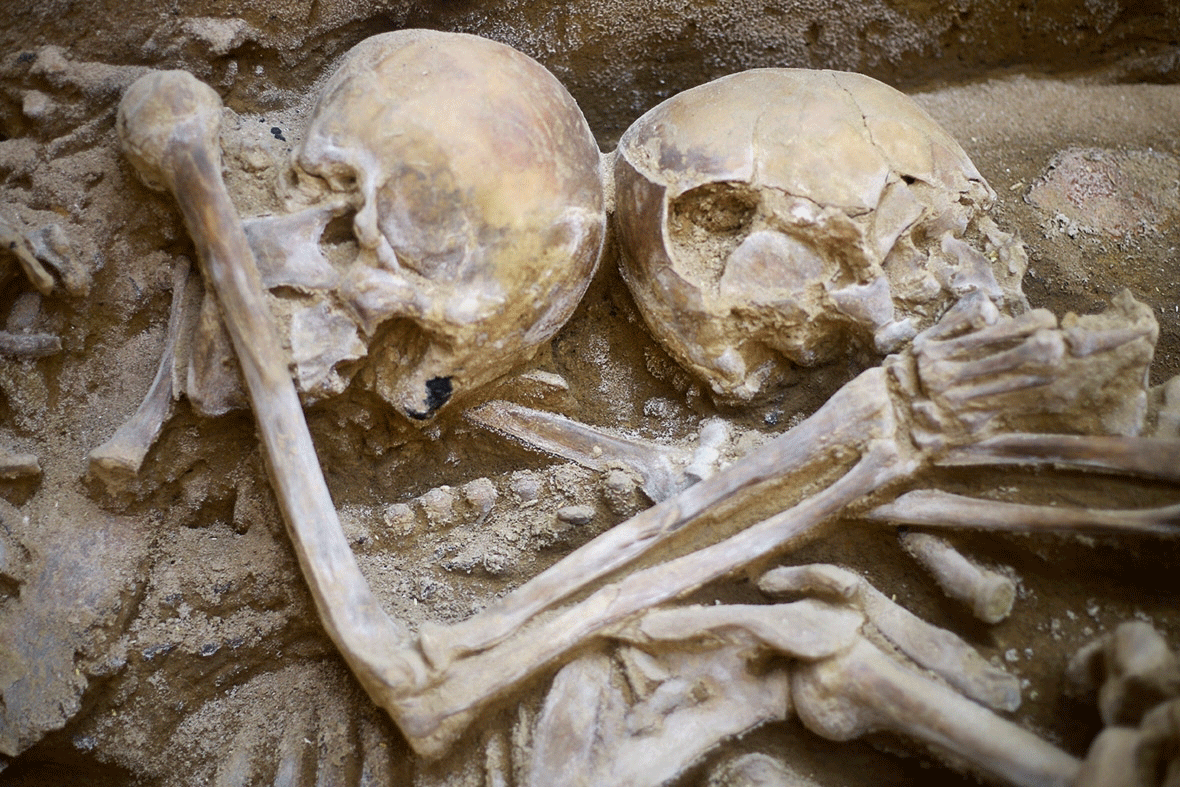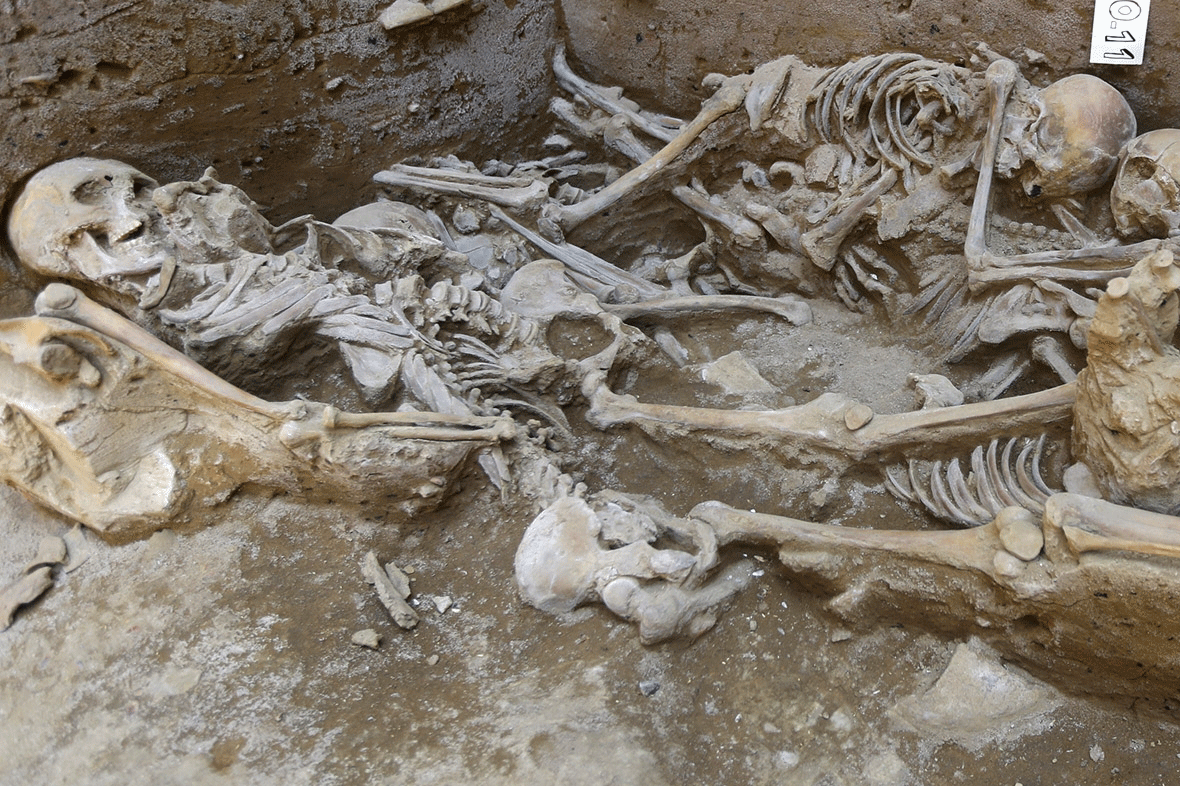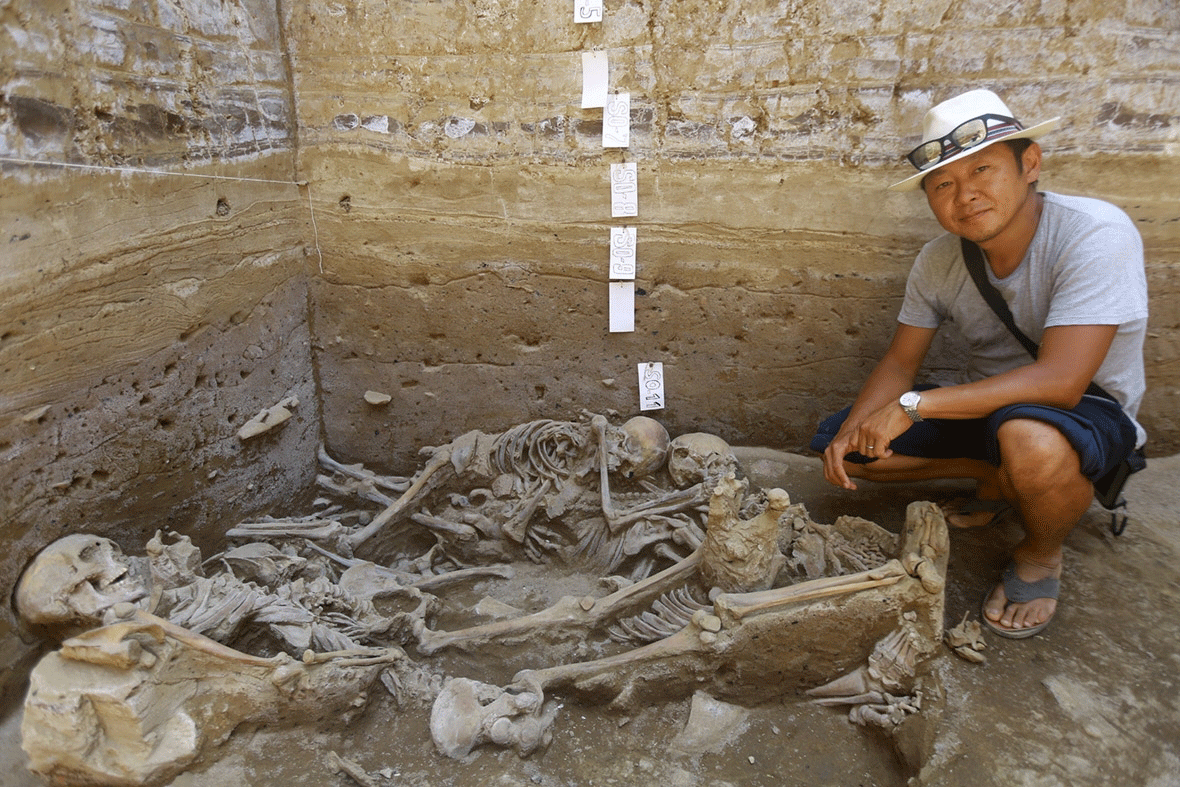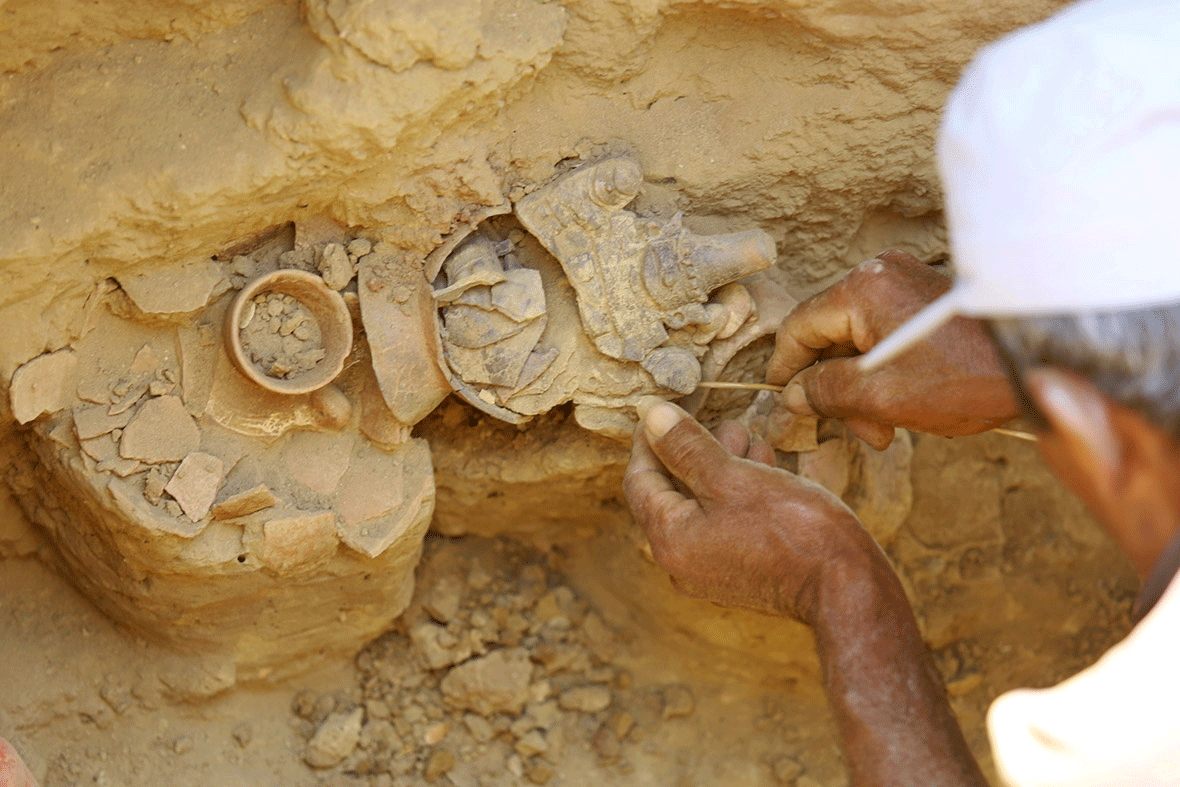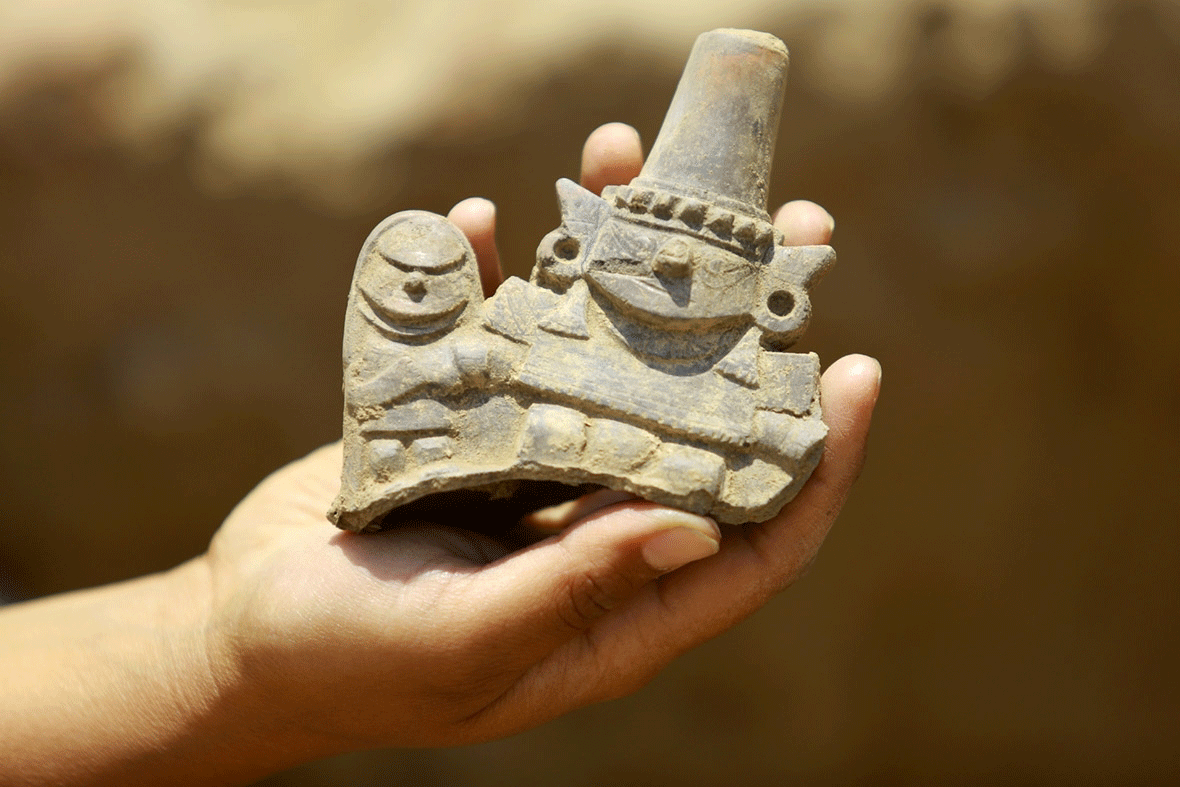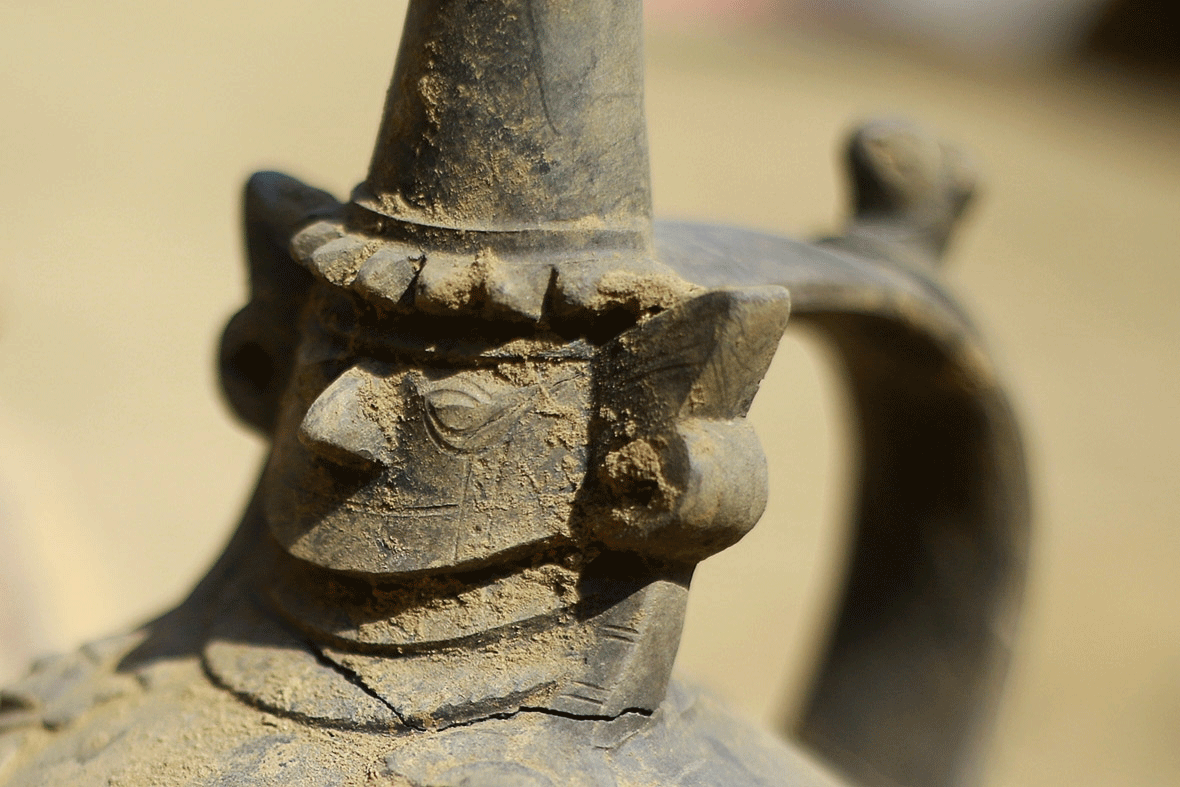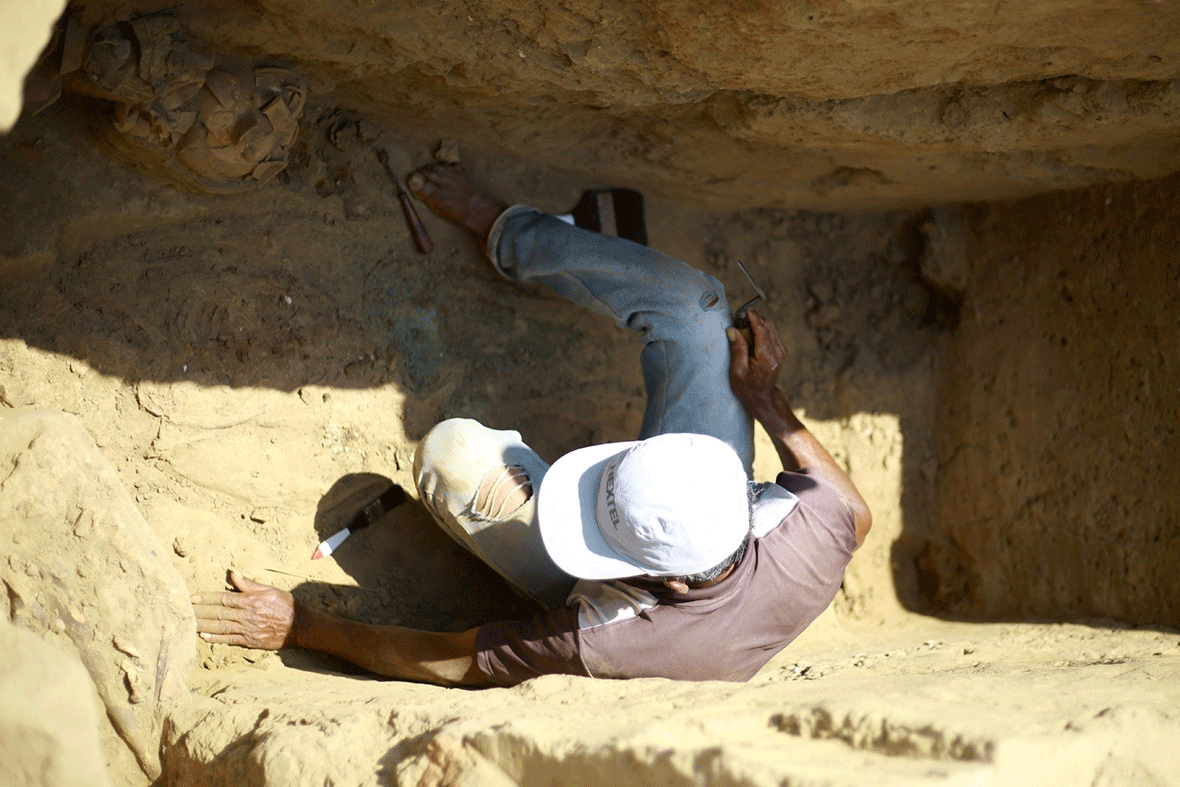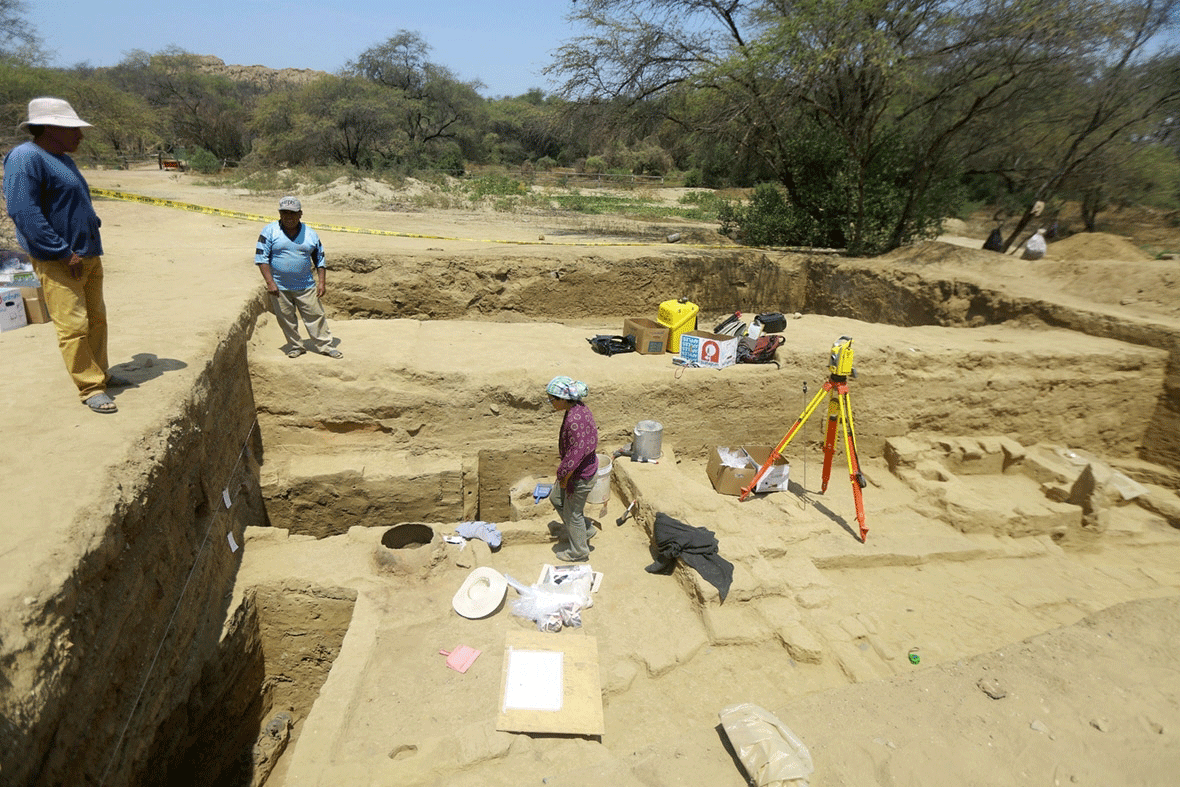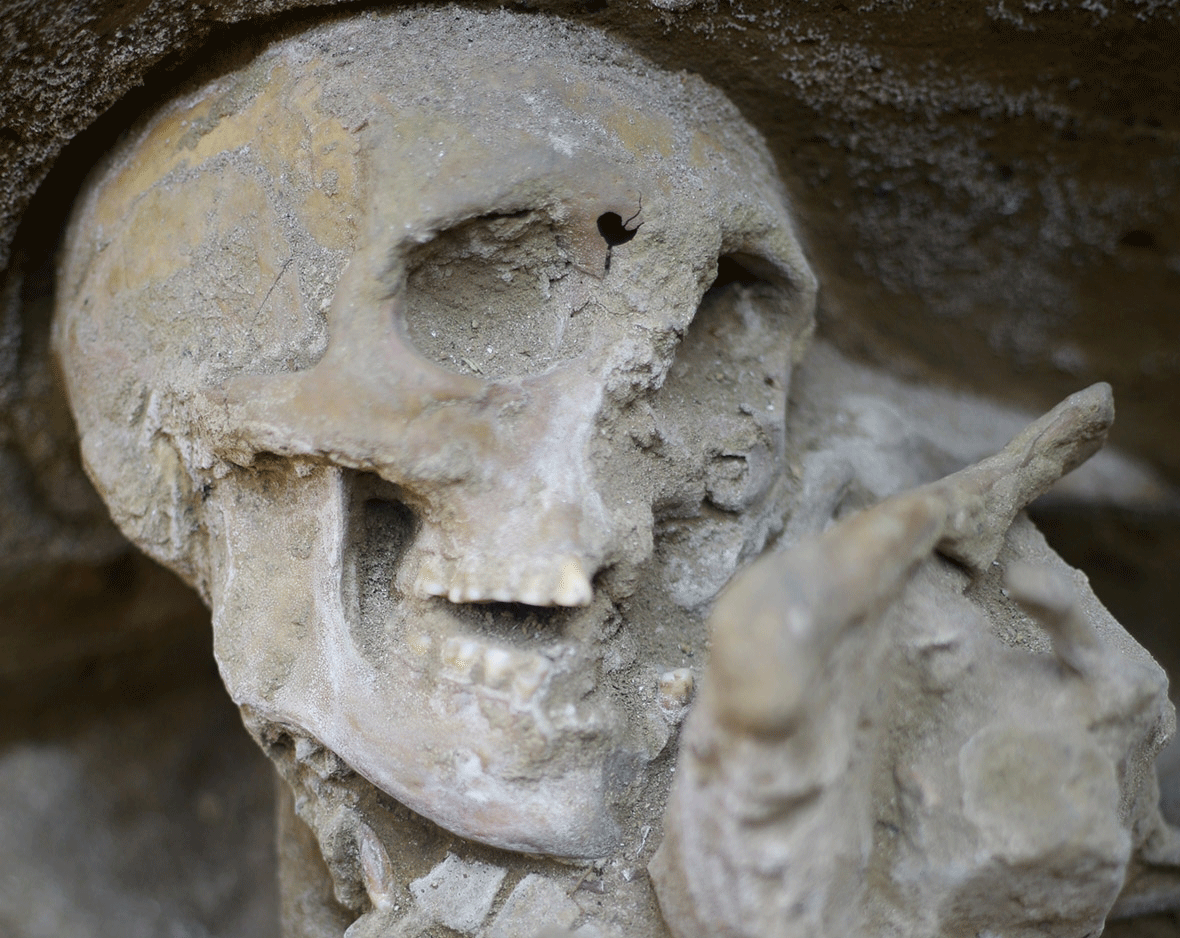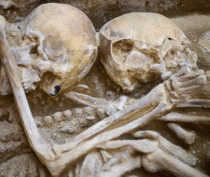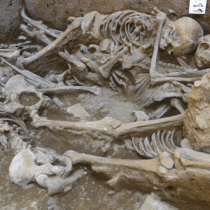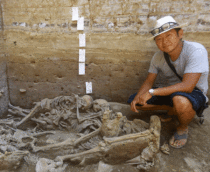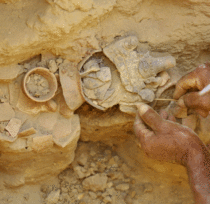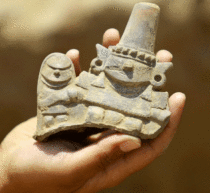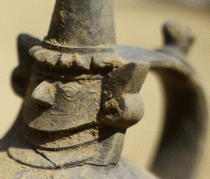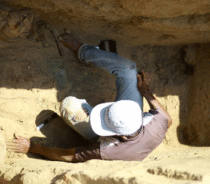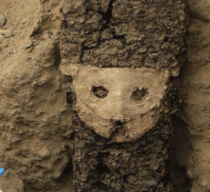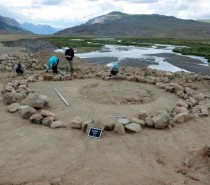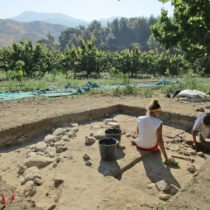Archaeologists in Peru have discovered two tombs, one with victims of human sacrifice and one with a member of an elite, and a metallurgy workshop, possibly dating back over 1,000 years.
The team, comprising Japanese and Peruvian archaeologists, were working at the Pomac Forest Historic Sanctuary, in the area of Lambayeque, about 700 km north of Lima.
At the larger area researchers discovered two tombs surrounded by ceramic vessels and ceremonial knives. The first tomb, contains the remains of nine individuals, all male and 25-30 years old at the time of death, probably sacrificed as part of a ritual. The second tomb, found in another area, is thought to be the burial ground of an elite member of the Sican culture. The Sicans predated the Incas and are thought to have been traders and skilled artisans who produced metal and ceramic artefacts with religious motifs. They lived on the north coast of Peru between 750 and 1375 AD. When the Spanish conquistadors arrived in Peru in the 16th century, the burial practices of the Sican were banned. The Sicans are thought to have died out after a drought that lasted 30 years.
